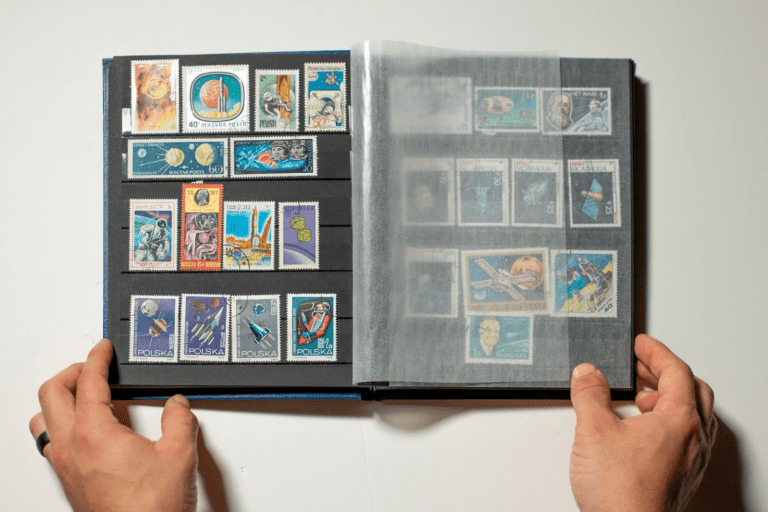When we think of the American Jewish diaspora, our minds generally don’t think of the South. This is God’s country – more specifically, Jesus Christ’s country. But that doesn’t mean there aren’t thousands of Jews living in the area. Shoshana Gugenheim Kedem and Adam Carlin, co-directors of Greensboro Contemporary Jewish Museum in North Carolina, connect to this community through social practices.
The museum, which has no physical headquarters, began in 2019 when Gugenheim Kedem was invited to become an artist in residence at the University of North Carolina at Greensboro. She worked in the small Jewish studies program, which brought her into contact with students in the religious studies department, none of whom were Jewish themselves.
Still, Gugenheim Kedem began meeting other Jews in this college town, which has a population of about 3,000 — a small community compared to the millions spread across New York, Los Angeles, Miami and San Francisco — and decided to start a museum who celebrated this culture for his residency project.
“Jewish museums are established in very large Jewish metropolises. » Kedem said to me over Zoom. “Under normal circumstances, they would never establish a Jewish museum in Greensboro, North Carolina. »
With the maiden name of Gugenheim, but no connection with THE Guggenheims, she has long been fascinated by museums and who holds their power, who manages the collections and whose voices are included. She connected with Carlin, who was then director of the UNCG Greensboro Project Space, and also a former classmate of hers at Portland State University’s MFA in Art and Social Practice, to launch the museum contemporary Jew in Greensboro and amplify Jewish stories in the predominantly Christian world. community.

For the first exhibition, 36 + 2, the museum sent a message to the community: “Please share a personal item that has meaning to you as a Jew. » The items they received included Judaic-style mezuzahs and menorahs, items traditionally associated with religion, but also more abstract items, like Tupperware and a football trading card. These objects were linked to the Jewish experience in more indirect, but equally significant, ways. Food, prepared by a Jewish community in Virginia, was brought to a breast cancer survivor during her recovery; and the trading card was given to a shy new elementary school student, and the owner thought the generosity represented tikkun olama tenant who asks Jews to repair and improve the world.
After the exhibition ended, the GCJM chose to decentralize the museum, with residents also serving as stewards of the permanent collection. This way, no one had to part with sentimental items permanently. Gugenheim Kedem made stickers that participants could display publicly in their windows, signifying their involvement in the GCJM. These stickers seemed risky in a city where every second house has a sign praising Jesus on its lawn. Even though no one experienced anti-Semitic backlash, announcing one’s identity publicly seemed like a risk.
“I think the intentions of the spaces we create and the communities we create are a response to not feeling safe all the time,” Carlin said. “Using social practice to engage the Jewish community is a tool to combat these things. It is anchored in our projects, and doing it in the South is particularly important.
The fact that 36 people participated in the first exhibition was fortuitous: the number corresponds to the Hebrew letter “Chai”, which is also represented by the number 18. All divisions of 18 are considered lucky in Jewish culture. It was a sign for the museum project to continue beyond Gugenheim Kedem’s residence.

The pandemic moved GCJM online, but they continued to host virtual events like a radical seder for Passover and a kosher baking class for Shavuot, a spring harvest festival. When Greensboro reopened, they built a Sukkah at the Elsewhere Museum. The community was growing.
GCJM and Elsewhere have teamed up to launch their next big project, a 10-day social practice institute for Southern Jewish artists. The inaugural cohort brought together four artists from North Carolina, Arkansas, Washington, D.C., and Florida, who filled their days with lectures, workshops, fieldwork, and artistic production. The artists brought this training back to their communities.

Although their projects are still in development, we get a glimpse of what’s to come thanks to Zoe Wampler’s collaborative performance. Divrei Torah Time Machine (2023-ongoing). Wampler, a movement artist, producer and educator, invites people to revisit the Torah portion of their bar or bat mitzvah by asking them questions that lead them to reflect on their coming-of-age journey.
Gugenheim Kedem and Carlin generated a lot of interest in this residency from people outside the South – including myself, as I am also a social practice artist in addition to a writer – but kept participants strictly regional.
The Social Practice Institute will soon complete its first year of engagement and is preparing to publish a call for its second cohort. Additionally, the GCJM is planning public programming around a new public sculpture, “She Couldn’t Take Off Her Boots” (2023), which was unveiled in April. The artist, Victoria Carlin Milstein, incorporated bronze casts of Greensboro resident and Holocaust survivor Shelly Weiner into the sculpture.

Even with these programs, the future of the GCJM is precarious. Without a permanent space, they rely on partnerships with venues like the Elsewhere Museum to maintain their known presence in Greensboro. They are also fighting for funding in a city that is constantly being passed over in favor of larger cities.
“I think the cultural impact of the Southern Jewish (artist) community is not highlighted in the same way as artists from Brooklyn, Los Angeles or San Francisco,” Gugenheim Kedem said.
The GCJM could be used as a model to highlight other areas where Jewish populations are present, but their stories are unknown. Imagine a Jewish museum in rural Oklahoma, Nebraska, or Utah. Greensboro may shine a spotlight on Jewish arts and culture in the South, but we are, in fact, everywhere.


